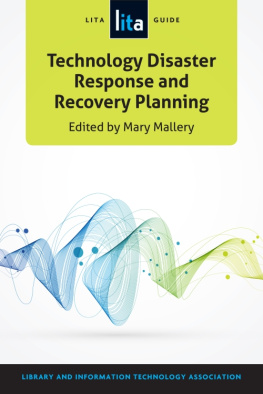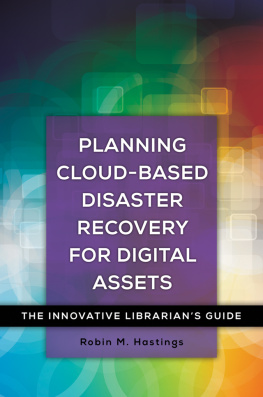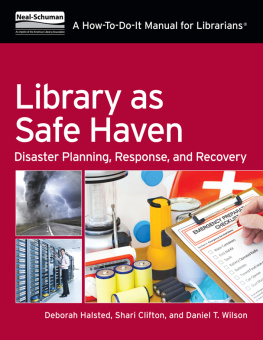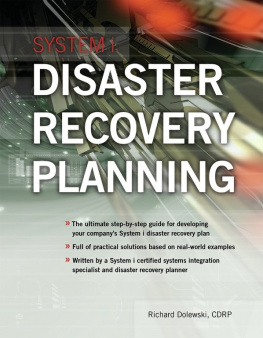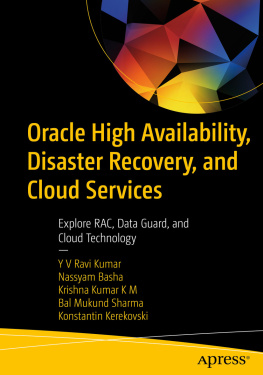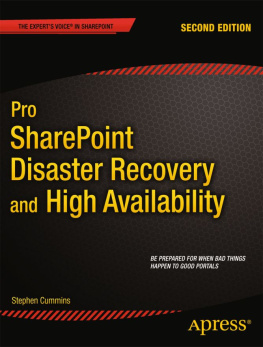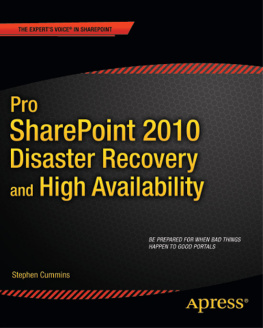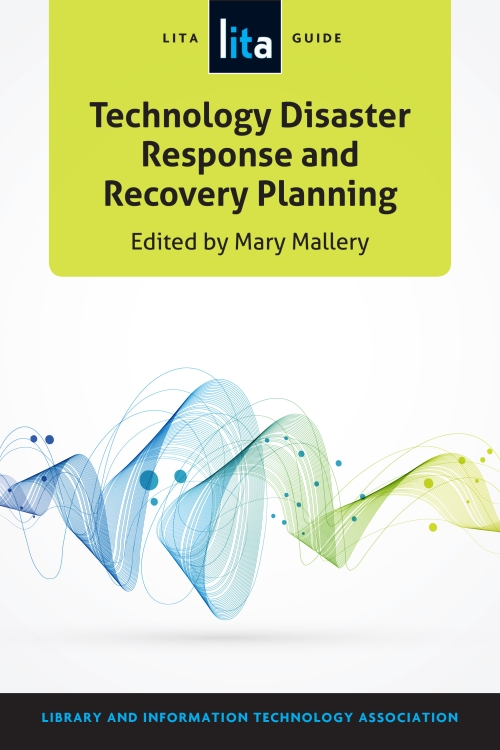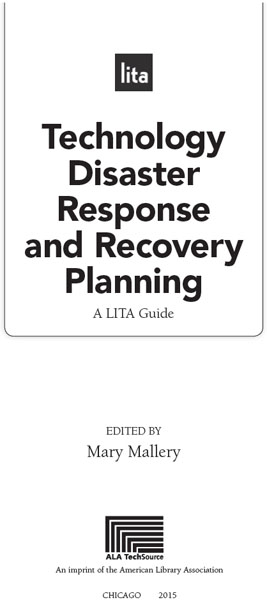By Liz Bishoff and Thomas F. R. Clareson
By Paul A. Soderdahl
By Thomas F. R. Clareson
Chapter One
Libraries, Technology, and Murphys Law
Mary Mallery
L ibraries depend more and more on technology to provide essential services. There are Internet and social media sites, electronic resources, and digital collections; our staff and public infrastructures of PCs, tablets, laptops, and peripherals; and of course the ubiquitous integrated library system (ILS). As technology becomes more essential to everyones life, this variety of devices, data, and software will grow more complex, as will the many ways that disasters, both natural and manmade, can cause loss of services and resources. Yet most library disaster plans focus on response and recovery from collection and facilities disasters, such as fire and flood.
But how do you begin to draft a comprehensive plan? This LITA Guide will provide readers with a step-by-step, blow-by-blow process to create a Library Technology Disaster Response and Recovery Plan. It includes sample checklists and templates, tools and solutions for promoting collaborative services to enable digital library continuity, and case studies and lessons learned from successful efforts in recovering from library technology disasters.
This LITA Guide includes chapters from contributing authors who have experience and practical advice to share about various aspects of library technology disaster response and recovery planning. The topic will be of great interest to tech-savvy staffsystems librarians, electronic resources librarians, digital collections librarians, data management librarians, emerging technology librarians, and library administratorsas well to librarians who wish to transition into these new careers and to library students. The target audience is academic library staff, with librarians and information professionals in other types of organizations as a secondary audience.
Definition of Terms
Librarians were the first to create systematic means of indexing and retrieving information, and as such they have always been in the forefront of the use and development of information science technologies. Technology disaster planning has been and continues to be essential to our field. But which technology do we focus on for our plan, and what constitutes a technology disaster? Lets start out by defining our terms.
What Is Technology?
The word technology comes from the Greek techne, meaning skill or art, which includes a vast array of possibilities. For example, long ago, fire was a technology. All libraries use technology to do their work these days, and we depend on it. If we dont have a plan to respond and recover and continue our work in the event of technology failure, when the fire goes out, we will be left in the dark. When we talk about library technology, are we referring to the hardware, software, peripheral devices, or everything mechanical? What about the infrastructure, such as the electrical grid or the telecommunications networkthe oxygen that makes the fire possible? Or what about the datathe fuel that makes the fire burn long or fizzle out? These days, when we talk about technology in the library, we talk about systems, because technology is not just one device or program but a complex integrated network of many technologies that depend on one another to work effectively.
What Is a Disaster?
The word disaster comes from the Latin for ill-starred. In the old days, a disaster was considered to be the predetermined outcome of inevitable bad luck. These days, however, we believe in self-determination, and that planning will keep away bad luck. Or, as Cassius says to Brutus in Shakespeares Julius Caesar, The fault, dear Brutus, is not in our stars, but in ourselves. Today, we can plan to moderate the effects of disasters and create networks of experts and services that will help us to respond efficiently and recover effectively, even if the disaster that strikes is not the one we feared.
There are many kinds and causes of disaster, both natural and manmade. There are large-scale natural disasters, such as the 2011 tsunami in Japan that caused the Fukushima disaster, and small failures of technology design, such as the O-ring failure that caused the Challenger explosion in 1986. Large or small, natural or manmadein complex systems, all the dominoes will fall in a cascade because of one tipping point failure.
Disasters are not just physical phenomena; they affect the whole system. Therefore, a holistic approach and an understanding of the dependencies of modern life are essential to a good disaster plan. Both the environmental and emotional effects of a disaster must be taken into account in planning.
Murphys Law
When we talk about disasters, we usually think of fire, floods, or earthquakes, but technology disasters can have many more causes than these. The problem can be as simple as ants blocking up a circuit board or bugs in the system, but if it causes the system to fail, and we depend on that system, the results can be disastrous.
The story goes that what is known as Murphys Law was first coined by an American aerospace engineer in 1949. The classic version of Murphys Law is: Whatever can go wrong will go wrong. Anyone who works with or depends on technology should keep this adage in mind. It also helps to acknowledge that you cannot anticipate all technology failures. You may never know what may cause the next outage, but you can try to be prepared to mitigate the circumstances so that it does not turn into a disaster.

